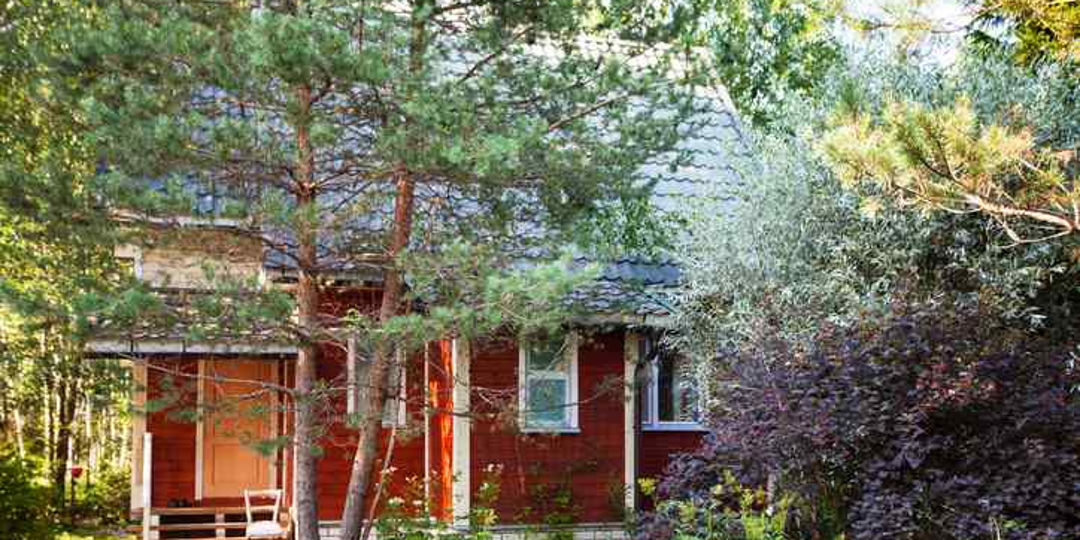How to Prevent a Tree from Growing Too Tall (Knowing When It’s Time for Plant Growth Regulators)
Large towering trees are beautiful. However, when a tree grows too tall, it can cause issues for your property and other surrounding plants. So, how do you stop a tree from growing too tall? While you can’t stop a tree from growing entirely, there are ways to slow down tree growth. The tree care experts at Monster Tree Service explain how to keep your tree at a suitable size for it’s planting location through corrective pruning and plant growth regulators. Plus, we share a strategic planting tip to prevent trees from outgrowing their space in the first place. Learn how to slow your tree’s growth while maintaining a healthy and beautiful yard.
How Do I Know When My Tree is Getting Too Big?
Large mature trees are highly sought after and can even impact the value of your property. However, lush trees come with hidden problems. For example, larger trees typically mean that they are more mature that are healthier and can withstand storms better if kept healthy.. Typically, trees planted in large open areas don’t pose a threat. However, trees in small confined areas can quickly outgrow their space. According to most local forestry commissions, you should not plant trees within 15 feet of a structure, 10 feet of an overhead utility, or 10 feet of an underground utility, road, drive, or walkway. Here are some signs that your tree may be getting too big for its space.
Branches are hanging over roof structures, driveways, or sidewalks.
Branches are touching power lines or other trees.
Roots are pushing up against fences, pavements, or foundations.
Shade is preventing nearby plant growth.
Leaves look dehydrated or dull.
The tree poses a risk to neighboring properties if it falls.
2 Ways to Slow Tree Growth and Keep Your Tree From Growing Too Tall
Pruning
If the crown of your tree is stretching too tall or wide, corrective pruning can help rein it in and size it down for the space available. It’s crucial to prune a tree before it becomes a problem because taking away too many branches could cause unnecessary stress. It is often best to prune in early spring for large non-flowering trees when a tree is still dormant, so you can see which limbs need attention and allow the tree to sprout new growth. If your tree is growing too large for its space, consider these two pruning methods. .
Crown reduction pruning removes unnecessary branches from the tree crown, like a haircut. The process relieves stress on the tree while bringing the sun back to your yard and trimming back encroaching branches. When reducing the tree crown, it is crucial not to cut off the top of the tree to make it fit in the space. Tree topping will disfigure your tree and make it susceptible to disease.
Developmental pruning is performed on young trees to help them develop proper branch structure and tree strength. Removal of weak branches and correcting poor form while branches are still small, will ultimately minimize sizeable pruning wounds. This proactive pruning performed in the early stages of the tree's life promotes a strong and balanced growth to enable it to better withstand storm elements.
Contact our expert arborists for assistance with pruning large trees, as it can be a dangerous job.
Plant Growth Regulators
While pruning can trim a tree down to size, plant growth regulators can help prevent a tree from outgrowing its space before it becomes an issue. Plant growth regulators contain hormones injected around the base of the tree. These hormones control growth and cause the tree to produce fewer or shorter offshoots, reducing the size of the tree over time. Growth regulators help keep a tree appropriately sized for its space, but you can also use them to improve tree health. For example, a tree growing too rapidly may be overusing its resources. Applying growth regulators can help a tree better handle its conditions while reducing the need for pruning. Consult a plant health care expert to see if growth regulators are right for your tree.
Plant Strategically
When it comes to existing trees outgrowing their space, you can only take corrective measures to reduce tree growth, like pruning and growth regulators. In some cases, tree removal may be the only option to keep your property safe from impending damage. However, if you are planting a new tree, you can avoid future overgrowth problems altogether by planting strategically. Consider the location and type of tree you are planting before you start digging a hole. You should plant trees that grow to large sizes an appropriate distance away from structures, pavements, utilities, and neighbors. However, you can plant miniature tree varieties closer to your home. If you plant a tree too big for the space, you will have to invest time and money to reduce its growth later on. Before landscaping, consult a tree expert who can advise you on the best types of trees for your yard.
We Can Help Keep Your Tree Growth Under Control
Dealing with a tree that’s outgrowing its space can be stressful, especially if you are trying to figure out how to trim a tree that’s too tall! When you need to reduce tree height, call in the experts. Our licensed, insured, and ISA-certified arborists can help keep your tree growth under control. Contact your local Monster Tree Service today for a free estimate!

